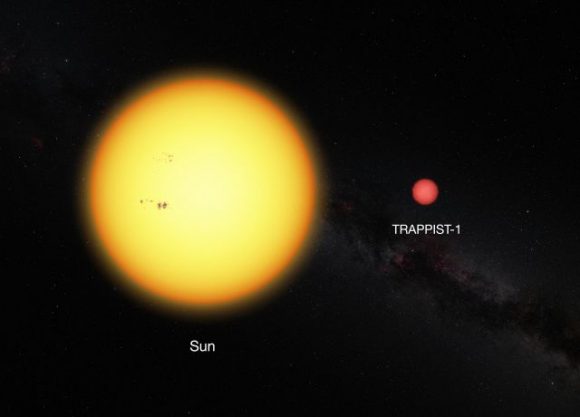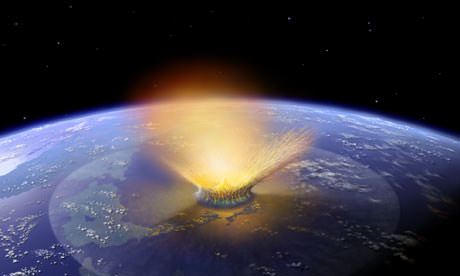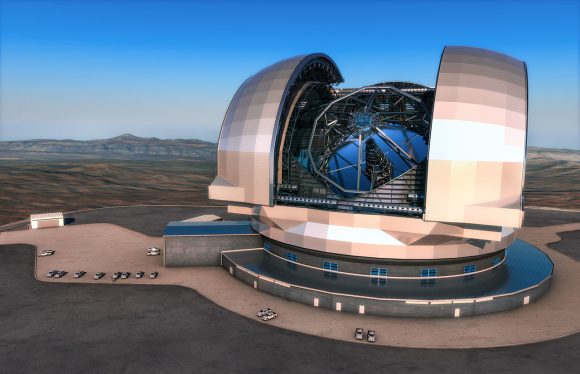Waymo, previously known as the Google self-driving car project, is an autonomous car developer and an independent company under Alphabet Inc. The company began in 2009 as a project under Google.
In December 2016, Google transitioned the project into a new company called Waymo, housed under Google’s parent company Alphabet. Alphabet describes Waymo as “a self-driving tech company with a mission to make it safe and easy for people and things to move around.” The new company, which will be headed by long-time automotive executive John Krafcik, plans to make self-driving cars available to the public in 2020
The project team has equipped a number of different types of cars with the self-driving equipment, including the Toyota Prius,Audi TT, and Lexus RX450h, Google has also developed their own custom vehicle, which is assembled by Roush Enterprises and uses equipment from Bosch, ZF Lenk system, LG, and Continental.
In May 2016, Google and Fiat Chrysler Automobiles announced an order of 100 Pacific a hybrid mini vans to test the technology on. Google's robotic cars have about $150,000 in equipment including a $70,000 LIDAR system. The range finder mounted on the top is a Velodyne 64-beam laser.
This laser allows the vehicle to generate a detailed 3D map of its environment. The car then takes these generated maps and combines them with high-resolution maps of the world, producing different types of data models that allow it to drive itself. As of June 2014, the system works with a very high definition inch-precision map of the area the vehicle is expected to use, including how high the traffic lights are; in addition to on-board systems, some computation is performed on remote computer farms.
In August 2016 alone, their cars traveled a "total of 170,000 miles; of those, 126,000 miles were driven autonomously. As of June 2016, Google had test driven their fleet of vehicles, in autonomous mode, a total of 1,725,911 mi (2,777,585 km). A Toyota Prius modified to operate as a Google driverless car, navigating a test course.
In 2012, the test group of vehicles included six Toyota Prius, an Audi TT, and three Lexus RX450h, each accompanied in the driver's seat by one of a dozen drivers with unblemished driving records and in the passenger seat by one of Google's engineers.
By May 2015, that fleet consisted solely of 23 Lexus SUVs. Google's vehicles have traversed an Francisco's Lombard Street, famed for its steep hairpin turns, and through city traffic. The vehicles have driven over the Golden Gate Bridge and around Lake Tahoe. The system drives at the speed limit it has stored on its maps and maintains its distance from other vehicles using its system of sensors. The system provides an override that allows a human driver to take control of the car by stepping on the brake or turning the wheel, similar to cruise control systems already found in many cars today.
On March 28, 2012, Google posted a YouTube video showing Steve Mahan, a resident of Morgan Hill, California, being taken on a ride in Google's self-driving Toyota Prius. In the video, Mahan states "Ninety-five percent of my vision is gone, I'm well past legally blind". In the description of the YouTube video, it is noted that the carefully programmed route takes him from his home to a drive-through restaurant, then to the dry cleaning shop, and finally back home. In August 2012, the team announced that they have completed over 300,000 autonomous-driving miles (500,000 km) accident-free, typically having about a dozen cars on the road at any given time, and are starting to test them with single drivers instead of in pairs.
Four U.S. states have passed laws permitting autonomous cars as of December 2013: Nevada, Florida, California, and Michigan. A law proposed in Texas would establish criteria for allowing "autonomous motor vehicles". In April 2014, the team announced that their vehicles have now logged nearly 700,000 autonomous miles (1.1 million km).
In June 2015, the team announced that their vehicles have now driven over 1,000,000 mi (1,600,000 km), stating that this was "the equivalent of 75 years of typical U.S. adult driving", and that in the process they had encountered 200,000 stop signs, 600,000 traffic lights, and 180 million other vehicles. Google also announced its prototype vehicles were being road tested in Mountain View, California. During testing, the prototypes' speed will not exceed 25 mph (40 km/h) and will have safety drivers aboard the entire time. As a consequence, one of the vehicles was stopped by police for impeding traffic flow.
Google has expanded its road-testing to the state of Texas, where regulations do not prohibit cars without pedals and a steering wheel. Bills were introduced by interested parties to similarly change the legislation in California. Google expected the California Department of Motor Vehicles (DMV) to release precedent-setting regulations regarding driverless cars in January 2015, allowing the company to give public access to the prototypes. As of October 2016, the CA DMV just issued draft regulations so is waiting for public comments.
Based on Google's own accident reports, their test cars have been involved in 14 collisions, of which other drivers were at fault 13 times. It was not until 2016 that the car's software caused a crash.
On February 14, 2016 a Google self-driving car attempted to avoid sand bags blocking its path. During the maneuver it struck a bus. Google addressed the crash, saying “In this case, we clearly bear some responsibility, because if our car hadn’t moved there wouldn’t have been a collision.” Some incomplete video footage of the crash is available. Google characterized the crash as a misunderstanding and a learning experience. The company also stated " This type of misunderstanding happens between human drivers on the road every day."
As of July 2015, Google's 23 self-driving cars have been involved in 14 minor collisions on public roads, but Google maintains that, in all cases other than the February 2016 incident, the vehicle itself was not at fault because the cars were either being manually driven or the driver of another vehicle was at fault.
In June 2015, Google founder Sergey Brin confirmed that there had been 12 collisions as of that date, eight of which involved being rear-ended at a stop sign or traffic light, two in which the vehicle was side-swiped by another driver, one of which involved another driver rolling through a stop sign, and one where a Google employee was manually driving the car.
In July 2015, three Google employees suffered minor injuries when the self-driving car they were riding in was rear-ended by a car whose driver failed to brake at a traffic light. This was the first time that a self-driving car collision resulted in injuries. Additionally, Google maintains monthly reports that include any traffic incidents that their self-driving cars have been involved in.
Google is required by the California DMV to report the number of incidents during testing where the human driver took control. Some of these incidents are not reported by Google when simulations indicate the car should have coped on its own. There is some controversy concerning this distinction between driver-initiated disengagements that Google reports and those that it does not report.
As of August 28, 2014, according to Computer World Google's self-driving cars were in fact unable to use about 99% of US roads. As of the same date, the latest prototype had not been tested in heavy rain or snow due to safety concerns.Because the cars rely primarily on pre-programmed route data, they do not obey temporary traffic lights and, in some situations, revert to a slower "extra cautious" mode in complex unmapped intersections.
The vehicle has difficulty identifying when objects, such as trash and light debris, are harmless, causing the vehicle to veer unnecessarily. Additionally, the lidar technology cannot spot some pot holes or discern when humans, such as a police officer, are signaling the car to stop. Google projects plan on having these issues fixed by 2020.
In 2012 Google founder Sergey Brin stated that Google Self-Driving car will be available for the general public in 2017, and in 2014 this schedule was updated by project director Chris Urmson to indicate a possible release from 2017 to 2020. Google has partnered with suppliers including Bosch, ZF Lenk system, LG, Continental, and Roush, and has contacted manufacturers including General Motors, Ford, Toyota (including Lexus), Daimler and Volkswagen
In August 2013, news reports surfaced about Robo-Taxi, a proposed driverless vehicle taxi cab service from Google. These reports re-appeared again in early 2014, following the granting of a patent to Google for an advertising fee funded transportation service which included autonomous vehicles as a method of transport.
Paid Google consultant Larry Burns says self-driving, taxi-like vehicles " should be viewed as a new form of public transportation." In a December 2016 blog post, CEO John Krafcik stated:"We can see our technology being useful in personal vehicles, ride sharing, logistics, or solving last mile problems for public transport" but also that "Our next step as Waymo will be to let people use our vehicles to do everyday things like run errands, commute to work, or get safely home after a night on the town." Temporary use of vehicles is known as Transportation as a Service.
Legislation has been passed in four U.S. states and Washington, D.C. allowing driverless cars. The state of Nevada passed a law on June 29, 2011, permitting the operation of autonomous cars in Nevada, after Google had been lobbying in that state for robotic car laws. The Nevada law went into effect on March 1, 2012, and the Nevada Department of Motor Vehicles issued the first license for an autonomous car in May 2012, to a Toyota Prius modified with Google's experimental driverless technology.
In April 2012, Florida became the second state to allow the testing of autonomous cars on public roads, and California became the third when Governor Jerry Brown signed the bill into law at Google Headquarters in Mountain View.
In December 2013,Michigan became the fourth state to allow testing of driverless cars on public roads.
In July 2014, the city of Coeur d'Alene, Idaho adopted a robotics ordinance that includes provisions to allow for self-driving cars.
In December 2015, the California Department of Motor Vehicles issued long-anticipated proposed regulations governing autonomous vehicles, and invited public comments on the draft regulations at meetings in Sacramento on January 28, 2016, and in Los Angeles on February 2, 2016.
If adopted, the regulations would require self-driving cars to have a steering wheel and pedals, and a human driver onboard who holds an " autonomous vehicle operator certificate." They would also hold the occupant responsible for accidents and violations of traffic laws, regardless of whether or not they were at the wheel.
The DMV summarized its perspective by stating, " Given the potential risks associated with deployment of such a new technology, that manufacturers need to obtain more experience in testing driverless vehicles on public roads prior to making this technology available to the general public." Lobbying by project manager Chris Urmson from Google in the US Senate is underway to change this.
ROBORACE.
Roborace race founder Denis Sverdlov and car stylist Daniel Simon unveiled the 'Robocar' during a keynote address at the Mobile World Congress in Barcelona. The design has largely stayed true to the initial concept that was released last April. The Robocar, which weighs 975kg, has four 300kW motors and Roborace claims it will be capable of speeds of almost 200mph.
Its DevBot mule has been averaging over 100mph on demonstration runs, with an average of 115mph in Buenos Aires, where the project was running in support of its partner series Formula E earlier this month. " This is a huge moment for Roborace as we share the Robocar with the world and take another big step in advancing driverless electric technology," said Sverdlov."I am so proud of the entire team and our partners and particularly the work Daniel has done creating this beautiful machine.
" It was very important for us that we created an emotional connection to driverless cars and bring humans and robots closer together to define our future. " The progress with Devbot on track and building the Robocar in less than a year has been extraordinary and we cannot wait to continue the journey of learning with the Robocar. " Sverdlov reiterated the desire of the series was to help prove autonomous vehicles were a safe and legitimate option for everyday use on the road.
Simon, whose design history includes working on the visuals for major films like Tron Legacy and Oblivion, said the series" opens a new dimension" for motor sport to meet artificial intelligence. " Whilst pushing the boundaries of engineering, we styled every single part of the Robocar," Simon added.
" We take special pride in revealing a functional machine that stays true to the initial concept shared, a rarity in automotive design and a testament of our determination. " It's a great feeling to set this free. " Each Roborace team will use the same base Robocar when the series finally starts, with the emphasis placed on software.
The series will rely on Formula E supplier Michelin for its tires, while another Formula E partner, electric truck company Charge, is providing electronics and motors for the Robocar. Roborace hit a mile stone in Buenos Aires last week when it put two versions of DevBot on track at the same time, although the Saturday 'race' was overshadowed by a crash for one of the cars.
There is still no firm target for when the first race will take place, only a reiteration that it will run as part of the Formula E package and the claim that two Robocars will appear on track together later this year.
approximately 14 months after it was initially announced, Robot race has finally unveiled the Robocar, the first driverless electric race car. Roborace promises to be the first entirely autonomous racing series, and the Robocar will be the car that its teams will field. The Robocar has been teased in the past, but this is its final form, unveiled today at Mobile World Congress in Barcelona, Spain.Robocar is positively loaded with tech.
Each of its four electric motors puts out about 400 horsepower, its battery capacity is 540 kWh and it will be capable of speeds over 200 mph. It will drive itself using five LIDAR emitters, two radar emitters, 18 ultrasonic sensors, six cameras and two optical speed sensors. NVidia's Drive PX2 computer will be responsible for crunching all that data.
Roborace Despite all those components, the car weighs just 2,150 pounds, which is less than a 2017Mazda MX-5 Miata. Sounds like every car will be the same, right? They will be, sort of. Roborace will provide the cars themselves, but it will be up to each individual team to provide the software that will get the cars around the track.
Roborace will establish an open AI platform, off which those teams will build that software. As you can see, there's no space for a driver -- if the software doesn't work, the car won't compete."Roborace opens a new dimension where motorsport as we know it meets the unstoppable rise of artificial intelligence," said Daniel Simon, Roborace's chief design officer.
"We take special pride in revealing a functional machine that stays true to the initial concept shared, a rarity in automotive design and a testament of our determination. It's a great feeling to set this free. "Originally announced in December 2015, Roborace moved quickly, showing off its Dev Bot prototype last August. The final product stays true to its concept, with a positively futuristic style that looks like part Formula 1, and part "Minority Report." Roborace hopes to get off the ground this year.
THANK YOU KEEP VISITING FOR MORE INFORMATION.





























Follow Us
Were this world an endless plain, and by sailing eastward we could for ever reach new distances